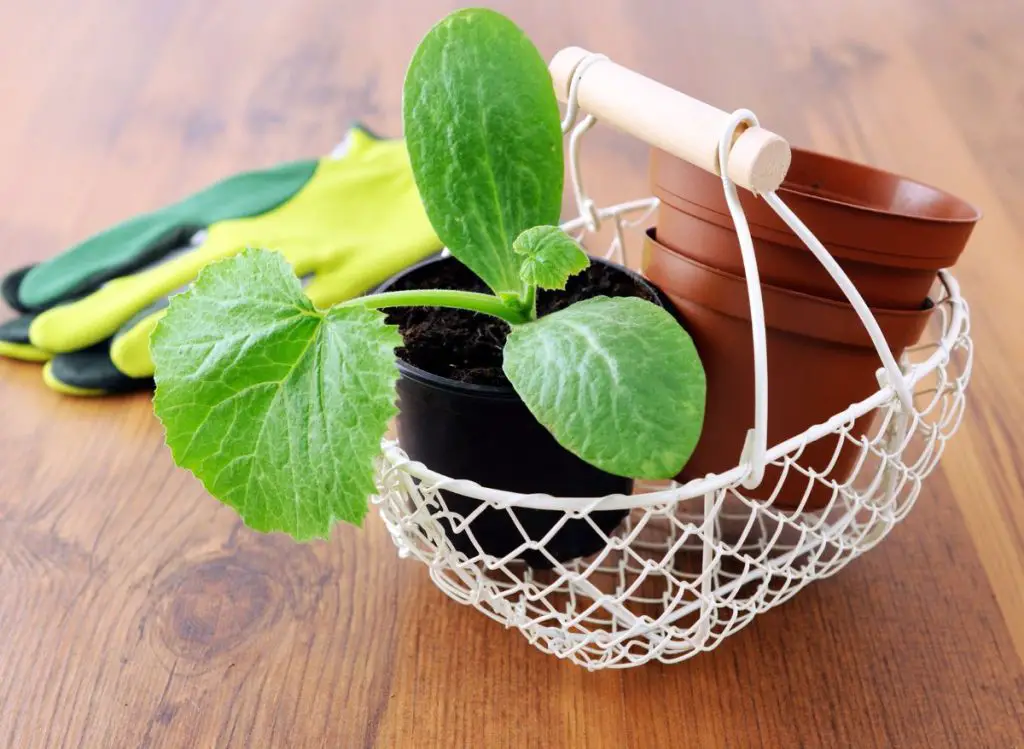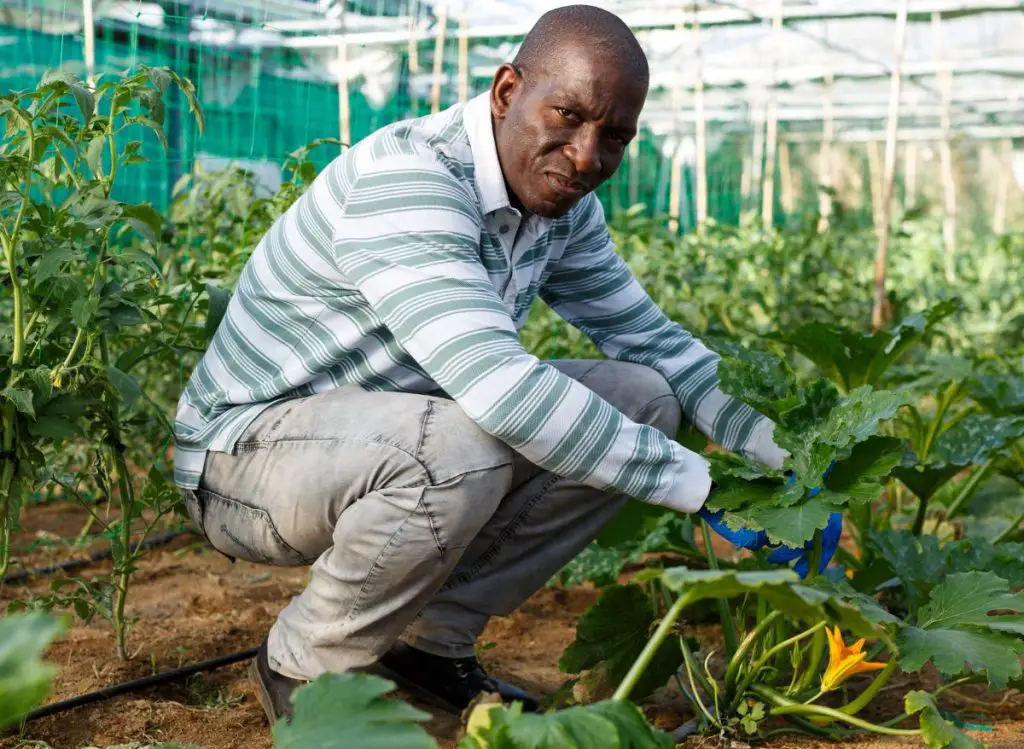
Growing squash is a great way to add delicious and nutritious veggies to your meals. Whether you have limited garden space or just want to get a head start on the growing season, starting squash seeds indoors can be a great option. However, timing is everything when it comes to starting seeds indoors.
But when to start squash seeds indoors? Start summer squash indoors about 3 to 4 weeks before your last frost date. If planting the seeds outdoors, wait until the soil temperature has reached 70 degrees Fahrenheit. If the soil is still cool, you can protect your squash seeds or transplants by adding row covers to help warm the soil.
In this blog post, I will discuss when to start squash seeds indoors and the steps you need to take to ensure a healthy crop of squash. If you wonder why is your zucchini turning yellow and rotting, I wrote a whole article that I encourage you to read.
What To Consider When Growing Squash Indoors?
Starting squash seeds indoors can be a great way to ensure a successful crop of delicious veggies. However, besides timing, there are a few critical things to consider when starting squash indoors.
Here is what to consider when growing squash indoors:
1- The Average Last Frost Date in Your Area
There are three key things to keep in mind when deciding when to start squash seeds indoors: the average last frost date in your area, the maturity period of the squash, and the soil temperature.
Generally, squash plants take about 70-100 days to mature, depending on the variety. Therefore, you’ll need to count back from your expected first frost date to determine when to start your squash seeds indoors.
As a rule of thumb, most gardeners plant their seeds indoors between 2-4 weeks before the average last frost date.
2- The Soil Temperature
Another consideration when starting squash seeds indoors is the soil temperature. In most cases, the minimum soil temperature required for squash seeds to germinate is around 60°F. That’s why it’s essential to ensure that your planting soil has warmed up before planting your seeds gently.
You can easily check the soil temperature using a soil thermometer available at many local garden centers.
3- Type Of Squash And the Planting Location
Additionally, you should consider factors such as the variety and the planting location. For example, if you want to grow large squashes like Hubbard or Turk’s Turban, which have a longer maturity period, it is wise to start the seeds indoors earlier than the recommended time frame.
Also, if you live in a cooler area, you may need to start them even earlier to ensure they have enough time to grow before your first frost. On the other hand, if you want to grow a smaller variety like a pattypan, you can start the seeds indoors a bit closer to the last frost date.
4- Transplanting
Transplanting is another consideration that plays a vital role in determining when to start your squash seeds indoors.
Most squash plants don’t take well to transplanting, meaning that they can get stunted or even die if transplanted, so it is a good idea to avoid it if possible.
Therefore, you should only transplant your squash seedlings outdoors once they have developed at least two true leaves and have reached at least 3-4 inches tall.

How To Start Squash Seeds Indoors?
Growing squash is one of the most satisfying and rewarding activities for gardeners. However, squash has a relatively long growing season and requires certain conditions to thrive.
Here’s how to start squash seeds indoors:
1- Determine Your Last Frost Date
The first step in figuring out when to start squash seeds indoors is to find out your last frost date. This date is important because squash plants are sensitive to frost and can only be planted outside once the threat of frost has passed.
You can find your last average frost date by consulting a gardening guide or asking your local nursery. Once you know your last frost date, count back 4 to 6 weeks to determine when to start your squash seeds indoors. This will give your seeds enough time to grow and develop into healthy plants before they are transplanted outside.
2- Choose Your Squash Variety Carefully
Not all squash varieties are created equal, and some are better suited to indoor seed starting than others.
Varieties that mature quickly, such as bush varieties, are ideal for starting indoors because they only need about 6-8 weeks from seed to transplant, which means you can start them later without sacrificing yield.
On the other hand, vining or large varieties that take longer to mature are not as well suited to seed starting indoors. They require more space and time to develop and may not have enough time to grow properly indoors.
3- Prepare Your Indoor Growing Environment
Before you start your squash seeds indoors, you need to make sure your indoor growing environment is suitable.
You will need a sunny spot in your home with plenty of natural light or grow lights to provide the necessary light for your plants. You will also need to maintain consistent temperatures between 65-75°F to ensure your seeds germinate and grow properly.
A seed starting tray, potting soil, and seed markers will be necessary materials you will require to plant your squash seeds indoors.
4- Plant Your Squash Seeds Indoors
Once you have gathered your materials, it is time to plant your squash seeds indoors.
- Fill your seed starting tray with potting soil and water it to moisten it.
- Next, make a small hole in the soil (about an inch deep) and place one seed in each hole.
- Cover the hole with the soil and water gently. Label your seeds to keep track of what you planted.
5- Care for Your Seedlings
Your squash seedlings will need proper care to grow successfully. Make sure they have enough light and maintain a consistent temperature. Water them regularly but don’t overwater.
Remember that overwatering can lead to root rot, which can quickly kill off your seedlings. You can also start to feed your seedlings with a balanced fertilizer after they’ve developed their first true leaves to encourage healthy growth and development.
What Temperature Do Squash Seeds Germinate?
Generally, squash seeds germinate better when the soil temperature is at least 70 degrees F. If your soil temperature is below 60 degrees F, your squash seeds will likely rot. Before planting squash seeds, I encourage you to get a soil thermometer.
For optimal results in starting squash indoors, I also encourage you to choose your squash variety with care, prepare your indoor environment with proper lighting and temperature, and carefully plant and care for your seedlings. With proper preparation, you are sure to grow a healthy crop of squash that will be the talk of your next meal.
What to read next:
- How To Successfully Plant And Grow Zucchini Plants: Everything You Must Know!
- When To Plant Zucchini In Oregon With Everything You Must Know!
- List Of 11 Animals That Damage Zucchini (And helpful Tips to Keep Them Away!)
- 13 Effective Zucchini Companion Plants To Try Now!
Wrapping Up
Starting squash seeds indoors give gardeners a head start on the growing season, making it easier to grow more fruit in your garden.
I believe that knowing when to start squash seeds indoors will help you plan your garden and save time and effort in starting your seeds.
Always remember to keep in mind the average last frost date, maturity period, soil temperature, and transplanting when deciding when to start your squash seeds indoors.
I believe that by following the proven and helpful tips outlined in this article, you will be on your way to a successful squash-growing season.

